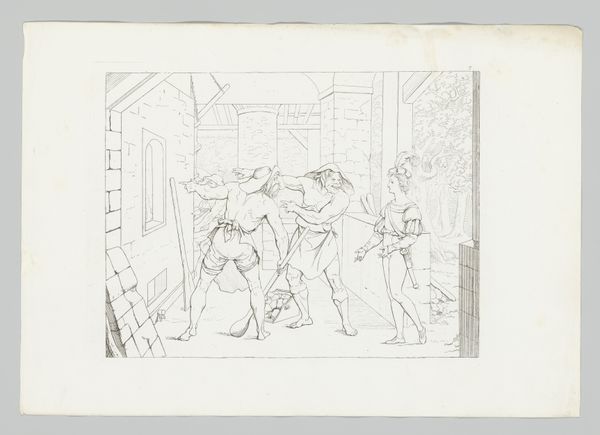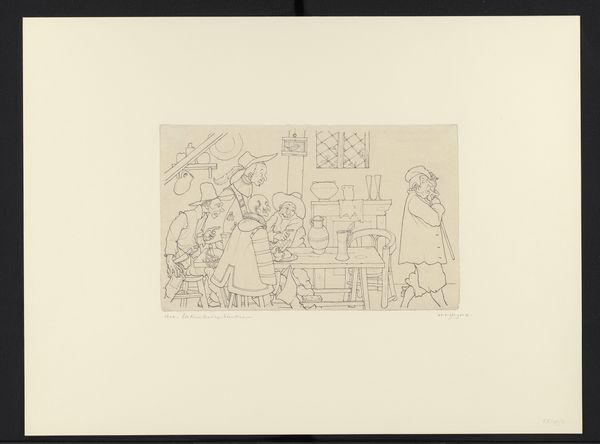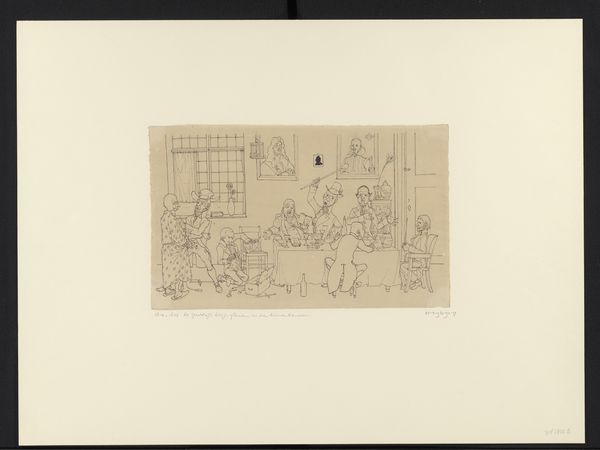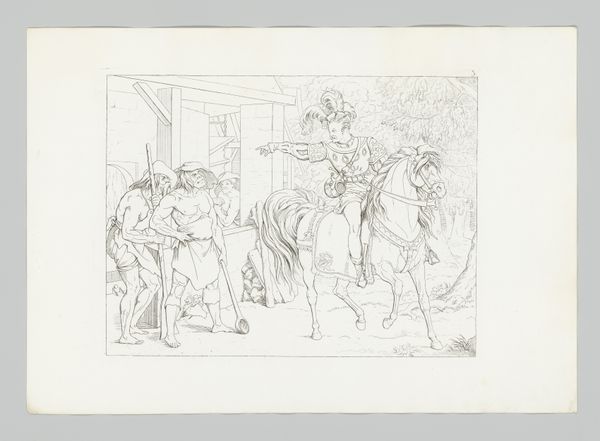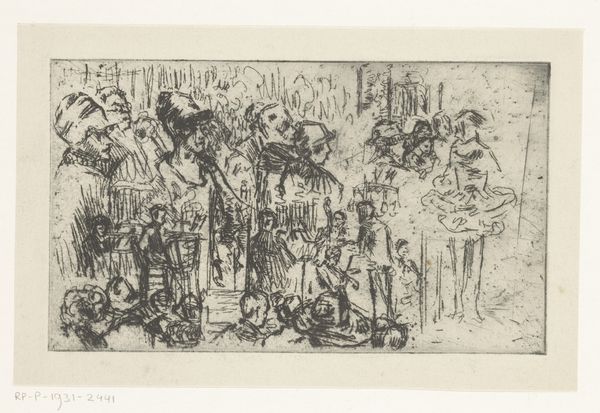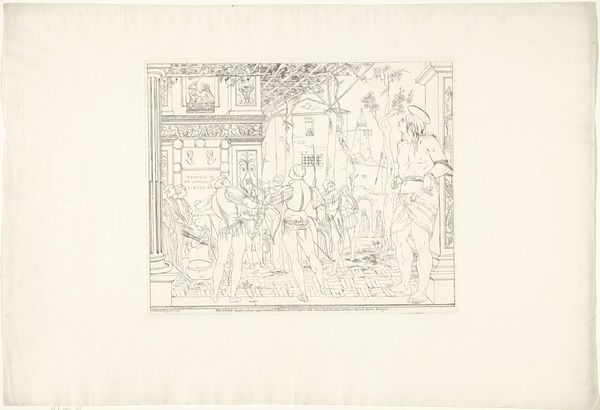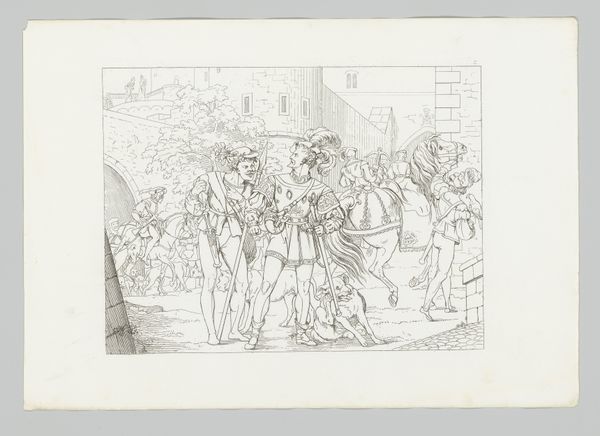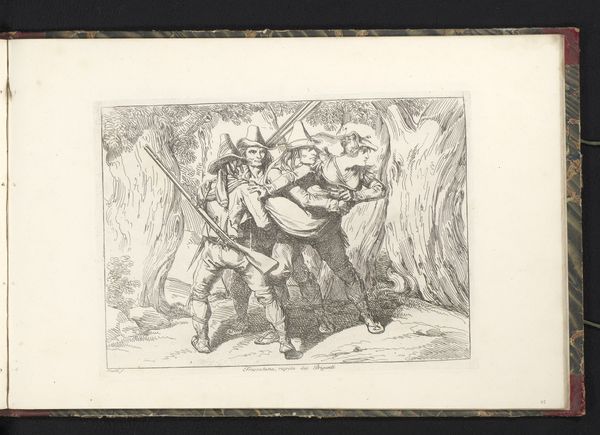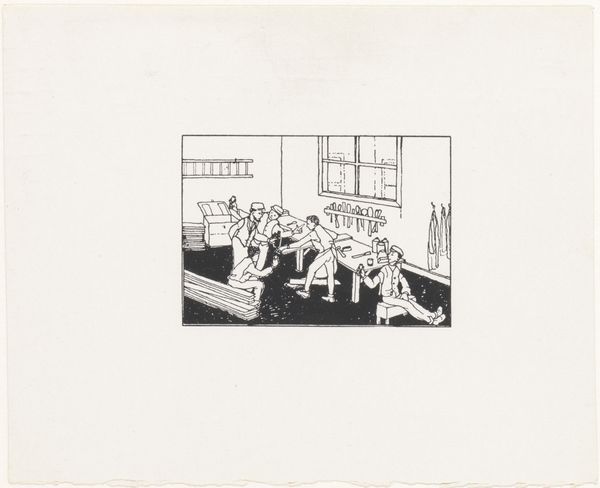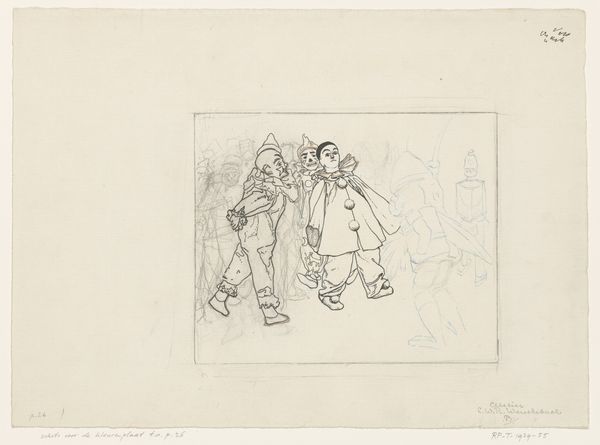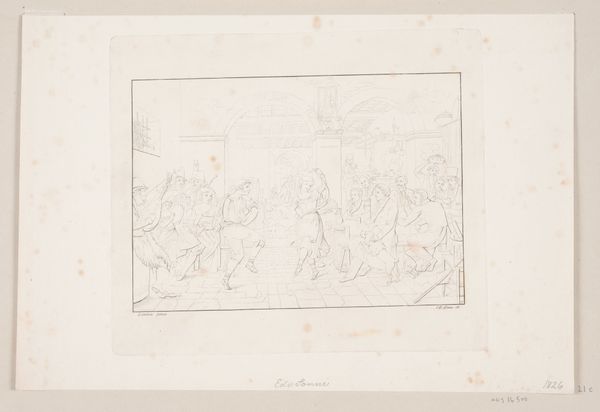
drawing, paper, ink, pen
#
drawing
#
aged paper
#
pale palette
#
narrative-art
#
sketch book
#
figuration
#
paper
#
personal sketchbook
#
ink
#
sketchwork
#
ink drawing experimentation
#
romanticism
#
line
#
sketchbook drawing
#
pen
#
watercolour illustration
#
genre-painting
#
storyboard and sketchbook work
#
sketchbook art
Dimensions: height 179 mm, width 239 mm
Copyright: Rijks Museum: Open Domain
Curator: Oh my! The way this drawing seems to materialize from the aged paper – it feels like peeking into some strange, darkly humorous dream. Editor: This intriguing ink drawing, dating back to 1823, is entitled "Man wordt in het fornuis gegooid" - "Man being thrown into the Furnace". It's by Moritz Retzsch, an artist deeply embedded in the Romantic movement. I'm interested in thinking about the work in light of Foucauldian thought: this image could be an allegory about the vulnerable body and control. Curator: A furnace, right? That's the ultimate transformative, but destructive, device! And these figures hauling the poor soul towards it have this mob-like mentality. Are we witnessing some form of… social cleansing through technological means? That furnace dominating the composition… it seems almost hungry. Editor: Considering its historical context, there’s certainly an argument to be made. This period sees the burgeoning of industrialisation; thus, this almost carnivalesque ritual becomes intertwined with broader questions about power dynamics inherent within emerging technological and societal structures. What narratives about marginalized peoples can we unearth here? Are we implicating the artistic choices into that analysis? Curator: Absolutely! The pale palette reinforces that dreamlike quality – it feels detached from immediate reality, allowing the nightmarish content to creep in. But it also suggests the work as just one step of an artistic journey or practice; there is a clear experimental mood. It reminds me that darkness often lurks beneath the surface of apparent progress. Editor: Precisely! Retzsch employs linear strokes within a romantic paradigm to expose themes such as power and class; these are translated onto paper through form, composition, and texture. The figure itself acts as a catalyst in unraveling such commentary that stems back almost two centuries ago – inviting reflection in equal measure alongside potential actions designed towards progressive means Curator: I'm so caught in imagining all the possible endings after the artwork snapshot we witness. And the open-ended quality somehow adds to its enduring power, doesn't it? The act becomes bigger than its circumstances, inviting us to consider similar instances still resonating nowadays... Editor: Indubitably, the potency in this sketch comes from its ability to transcend its historical moorings, inciting ongoing conversation with contemporary anxieties that continue bubbling beneath. The brilliance, for me, comes in provoking questions to prompt change.
Comments
No comments
Be the first to comment and join the conversation on the ultimate creative platform.
